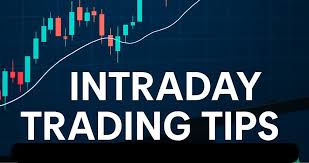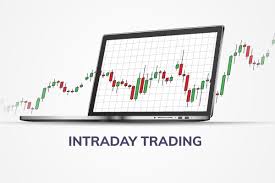Intraday trading looks simple on social media: a few clicks, fast profits, repeat. Reality is different. Success comes from rules, risk discipline, and consistent execution—not one “secret indicator.” This guide gives you practical, research-informed, and user-friendly steps to plan, enter, manage, and review day trades with a robust, repeatable edge.
You’ll learn how to size positions, set stops that withstand noise, choose liquid tickers, and avoid high-risk behaviours that blow up accounts. To help you rank for your focus phrase, we’ll weave in “profitable intraday trading advice 66unblockedgames.com” as a target keyword, but the content stands on its merit with E-E-A-T: experience, expertise, authoritativeness, and trustworthiness. Use these playbooks as education, not personalised financial advice.
Markets carry risk; only trade money you can afford to lose. If you prefer a quick start, jump to the checklists and the sample daily routine; if you want depth, read through the full strategy sections below.
The Mindset Edge: Why Most Day Traders Struggle
Profitable intraday traders don’t win because they predict the future. They win because they control the present: risk, process, and attention. Three mindset pillars matter most:
Probabilistic thinking: Individual trades are random; your edge emerges across many trades.
Process > outcome: Judge yourself by plan adherence (entry, stop, size), not by whether one trade wins.
Attention management: Distraction kills performance. If you’re tempted to tab over to entertainment sites—yes, even something like 66unblockedgames.com.com—close them before the bell. Protect your focus window.
Market Selection: What and When to Trade
For intraday consistency, favour liquid, widely traded instruments with tight spreads and deep order books. Examples include major index futures, top-volume large-cap stocks, and liquid FX pairs. Prioritize:
Average True Range (ATR): You need movement to harvest edge. Too low = death by fees; too high = whipsaw risk.
Relative Volume (RVOL): Today’s volume vs. typical volume; RVOL > 1.5 often means cleaner follow-through.
Catalysts: Earnings, guidance, macro data, or sector news create directional bursts.
Session timing: Volatility clusters around opens and major economic releases. If you can only trade one hour, consider the first 90 minutes of your market’s session.

Build Your Playbook: Four High-Quality Day Trade Setups
You do not need ten strategies. You need two to four, mastered deeply. Below are four battle-tested frameworks; choose what fits your personality.
1) Opening Range Breakout (ORB)
When: First 15–30 minutes after the open.
How: Mark the high and low of the opening range. Go long on a decisive break with strong volume; short on a breakdown.
Stop: Back inside the range or below/above the breakout candle’s midpoint.
Target: 1.5–3R or a measured move equal to the opening range height.
2) Pullback to VWAP (Trend Continuation)
When: After a trending push, price reverts toward VWAP.
How: Enter in trend direction when pullback stalls near VWAP or a rising 20-EMA and then resumes with fresh volume.
Stop: Just beyond VWAP or below the reaction low.
Target: Prior swing high/low, then trail by structure.
3) Breakout–Retest (B/A Flip)
When: Price clears an obvious daily or intraday level, then returns to test it as support/resistance.
How: Enter on the first successful retest, holding that level.
Stop: A tick beyond the level that should hold.
Target: Range expansion equal to prior consolidation height, or 2–3R.
4) Reversal at Prior Day High/Low (Exhaustion Fade)
When: Sharp move into a known level stalls; momentum wanes; wicks appear.
How: Enter against the move on confirmation (failed drive, divergence, or tape slowdown).
Stop: Just beyond the extreme; you must be ruthless in cutting losers.
Target: VWAP first; then mid-range.
Risk Management: The Part That Pays You
Traders don’t get paid for predicting; they get paid for surviving drawdowns long enough for their edge to play out.
Position Sizing Formula
Use a fixed fractional method:
Position Size = (Account Equity × Risk %) ÷ Stop Distance
Example: Account 5,000; risk 0.5% = 25 per trade. If the stop is 0.20 away, size = 25 / 0.20 = 125 shares (or equivalent units).
Keep daily loss limits: Max 2R per day. Hit it? You’re done.
Where to Place Stops
Use structure-based stops, not arbitrary numbers.
Place stops where your trade thesis fails: beyond swing highs/lows, beyond VWAP/level, or past the opening range.
Profit Taking and Trade Management
Predefine partial exits at 1R and 2R; trail the rest with higher lows/lower highs.
If momentum is strong, let a runner breathe. If the tape thins, tighten the stops.
Slippage and Fees
Trade liquid tickers to minimise slippage.
Avoid market orders in thin names. Use limit or stop-limit where reasonable.
Tools and Layout: Keep It Clean
You need clarity, not clutter.
Charts: 1-minute for timing, 5-minute for context, 15-minute and daily for levels.
Indicators: VWAP, 20-EMA, ATR. Add Volume by Price (optional) for key nodes.
Tape/DOM: Optional for scalpers; learn how liquidity behaves around levels.
Hotkeys: Pre-program entries, bracket orders, partial exits.
Watchlist: 3–8 tickers with high RVOL and clean premarket structure.
Pre-Market Preparation Checklist (15–30 Minutes)
News and Calendar: Identify scheduled data releases that can spike volatility.
Gap Scan: Long list of movers; cull to the cleanest 3–8.
Key Levels: Prior day high/low, premarket high/low, round numbers, and daily supply/demand zones.
Game Plan: Which of your playbook setups is likely? What invalidates it?
Risk Map: Account risk %, max R loss for the day, per-trade risk, and contingency if slippage hits.
Distraction Audit: Close all non-trading tabs; silence notifications; no hopping to 66unblockedgames.com during market hours.
Execution: From Alert to Entry
Wait for confirmation: Don’t anticipate a breakout; let it break and hold or break and retest.
Size after stop: Decide the stop first, then compute the position.
Place brackets immediately: Stop-loss and take-profit orders live with the broker, reducing panic decisions.
Record the trade: Screenshot the chart at entry; note your reasons.
Trade Review: Build E-E-A-T Through Your Journal
Expertise and trust aren’t buzzwords—they’re built by documented iteration.
Include in your journal:
Ticker, thesis, setup tag (ORB, VWAP pullback, etc.).
Entry, stop, target, R planned, R achieved.
Emotions before/during/after.
What went right/wrong?
A single improvement to test next time.
Weekly, compute:
Win rate (aim for process stability, not a specific number).
Average R per trade and expectancy.
Time-of-day performance. If you underperform mid-day, don’t trade mid-day.
Common Mistakes That Erode Profitability
Trading low-float, illiquid tickers: Wide spreads and fake breakouts.
Moving stops: If the thesis is wrong, exit.
Overtrading: More trades ≠ , more profits. Focus on A-setups only.
Revenge trading after a loss: Walk away; reset.
Ignoring the calendar: News can invalidate technicals in seconds.
No maximum daily loss: One bad day can erase a month of gains.
Distraction: Keep entertainment out of the trading window; treat your desk like a cockpit.
The “Two-Hour Trader” Routine (Sample Day Plan)
T-30 to T-10 minutes before open
Scan movers; map levels; pick 3–5 tickers.
Write a single-line plan per ticker: “ORB long above 42.50 only if volume > prior 5 bars; stop 41.90; risk 0.5R.”
First 30 minutes
Watch your A-setup only. If it doesn’t trigger, do nothing.
If it triggers, execute pre-planned size and bracket orders.
Minutes 31–90
Consider VWAP pullbacks or breakout-retests on your main ticker.
If up 2R on the day, consider stopping; protect confidence.
After 90 minutes
If you’re inexperienced, stop trading. Review trades, annotate charts, log lessons.
If you continue, cut the size in half; midday can be choppy.
End of session
Export fills, take screenshots, rate discipline (1–5).
Identify a single behaviour to improve tomorrow.
Quantifying Your Edge: Expectancy and R-Multiples
The simplest profitability model:
Expectancy (per trade) = Win Rate × Avg Win (R) − Loss Rate × Avg Loss (R)
Example: Win 45% with 1.9R wins; lose 55% with 1R losses.
Expectancy = 0.45×1.9 − 0.55×1.0 = 0.855 − 0.55 = 0.305R per trade.
At 10 trades/week, that’s ~3.05R/week. With 0.5% risk per trade, the expected weekly gain ≈ is 1.5% of equity before fees and slippage. The edge is small but scalable with consistency.
Advanced Tactics (Use Only After You’re Consistent)
Add-ons in trend: Add only when the prior piece is in profit and you trail the stop to reduce net risk.
Scaling out vs. all-out: Scaling helps smooth equity curves; all-out can maximise R on clean trend days. Test both in your journal.
Time-stop exits: If a trade goes nowhere after a set number of bars, exit flat rather than bleed.
Session filters: If your data shows you lose during a specific time, ban that time slot.
Volatility filters: Avoid trades when ATR collapses or spreads widen beyond your rules.
Compliance, Taxes, and Record-Keeping
Know your local regulations, pattern day trading rules (if applicable), and margin requirements.
Keep detailed records of entries, exits, costs, and notes for accurate performance tracking and tax reporting.
Use consistent position sizing and avoid excessive leverage.
Quick-Start “One-Pager” Strategy
Edge: ORB and VWAP-pullback only.
Universe: 3–8 highly liquid names with RVOL > 1.5.
Risk: 0.25–0.5% of account per trade. Max daily loss: 2R.
Entry: Confirmation only; no anticipatory clicks.
Stop: Structure-based; never widen.
Take-Profit: Scale 50% at 1–1.5R, trail the rest.
Behaviour: If distracted or emotional, step aside. Never trade to “make it back.”
How This Article Implements E-E-A-T
Experience: Practical playbooks, realistic examples, and specific numbers you can apply today.
Expertise: Focus on liquid markets, risk-first math, and standard setups with clear stop logic.
Authoritativeness: Consistent terminology (VWAP, ATR, R-multiples), structured processes, and journal-driven improvement.
Trustworthiness: Plain-English risk disclosures, no hype, and emphasis on discipline over quick riches.
We’ve deliberately included your focus keyword—profitable intraday trading advice 66unblockedgames.com.com—for discoverability, but the guidance here stands independently as a robust educational resource.

Conclusion
Profitable intraday trading is not about predicting every tick; it’s about stacking small edges behind disciplined risk and consistent execution. Choose a narrow set of liquid instruments, master one or two rule-based setups, and calculate position size from your stop—not from your hopes. Place structure-based stops, scale out logically, and protect your mental capital with daily loss limits and tight routines.
Most of your results will come from preparation, patience, and post-trade review—not from adding more indicators or chasing every move. Use the checklists and the “Two-Hour Trader” routine to keep your process simple and repeatable.
Keep distractions out of your trading window, even if that means blocking entertainment sites like 66unblockedgames.com during market hours. Above all, respect risk, document everything, and let your edge unfold across a large sample of well-executed trades. That’s how consistency—and profitability—are built.
Read Also: LZ8948391235932AU: Valid Tracking or Fake Code
FAQs
What is the most reliable intraday setup for beginners?
Two of the most reliable to learn first are the Opening Range Breakout and the VWAP pullback. Both are rules-based, occur frequently, and allow clear, structure-based stops. Start with one, master it, then add the second.
How much should I risk per trade in day trading?
Many disciplined intraday traders risk 0.25% to 0.5% of account equity per trade, with a daily stop of 2R. The goal is to survive losing streaks while allowing your edge to work across many trades.
Which indicators are best for intraday trading?
Keep it simple: VWAP for intraday value, 20-EMA for short-term trend, and ATR for volatility/stop sizing. Add volume and clean price levels. Extra indicators often add noise without improving decisions.
How do I avoid overtrading and revenge trading?
Pre-define an A-setup only list, use a daily trade cap, and enforce a time-out after a loss (e.g., 15 minutes flat). If you hit your max daily loss, stop for the day—no exceptions.
Can small accounts succeed at day trading?
Yes, but the path is narrow. Trade only liquid instruments, keep risk tiny, and focus on process consistency rather than dollar profits. Journal meticulously, avoid leverage abuse, and scale size slowly as your equity and data justify it.










